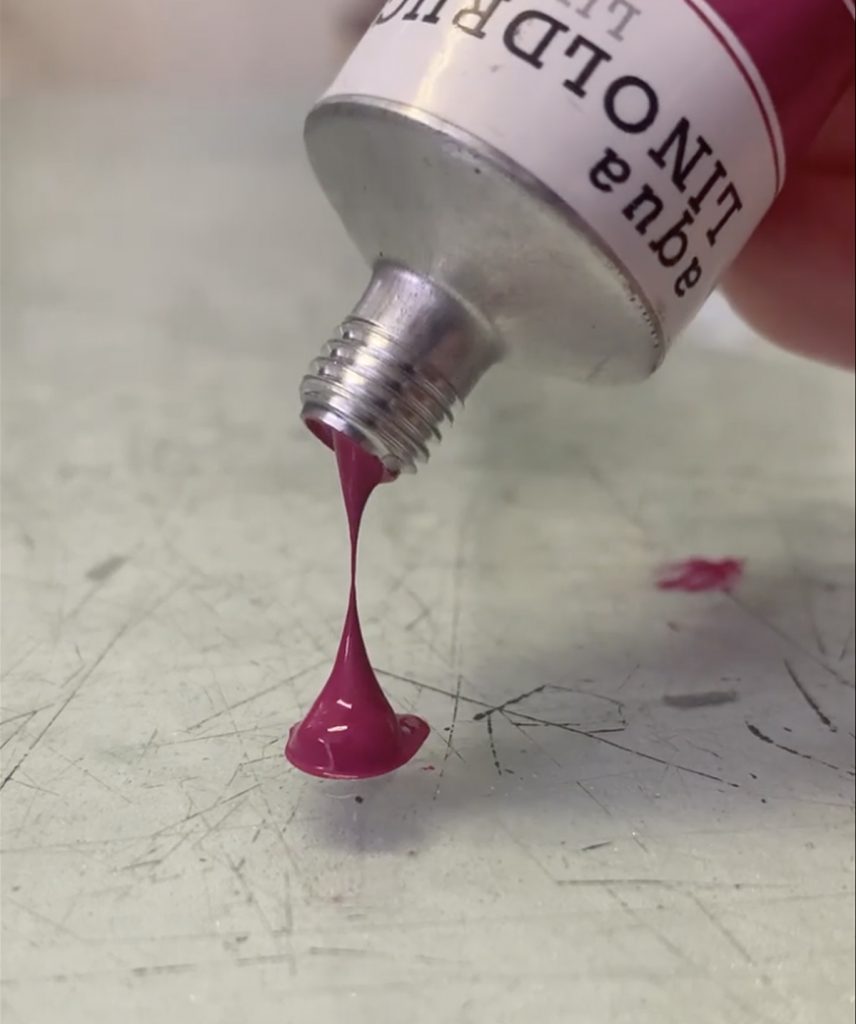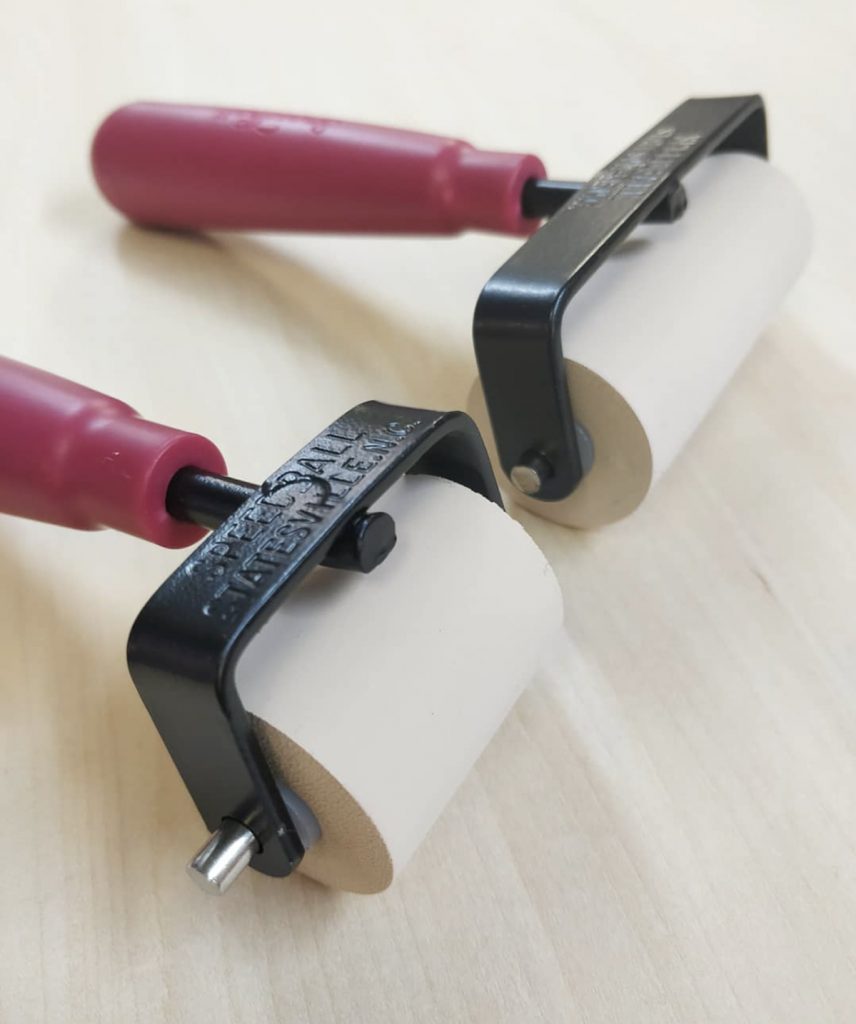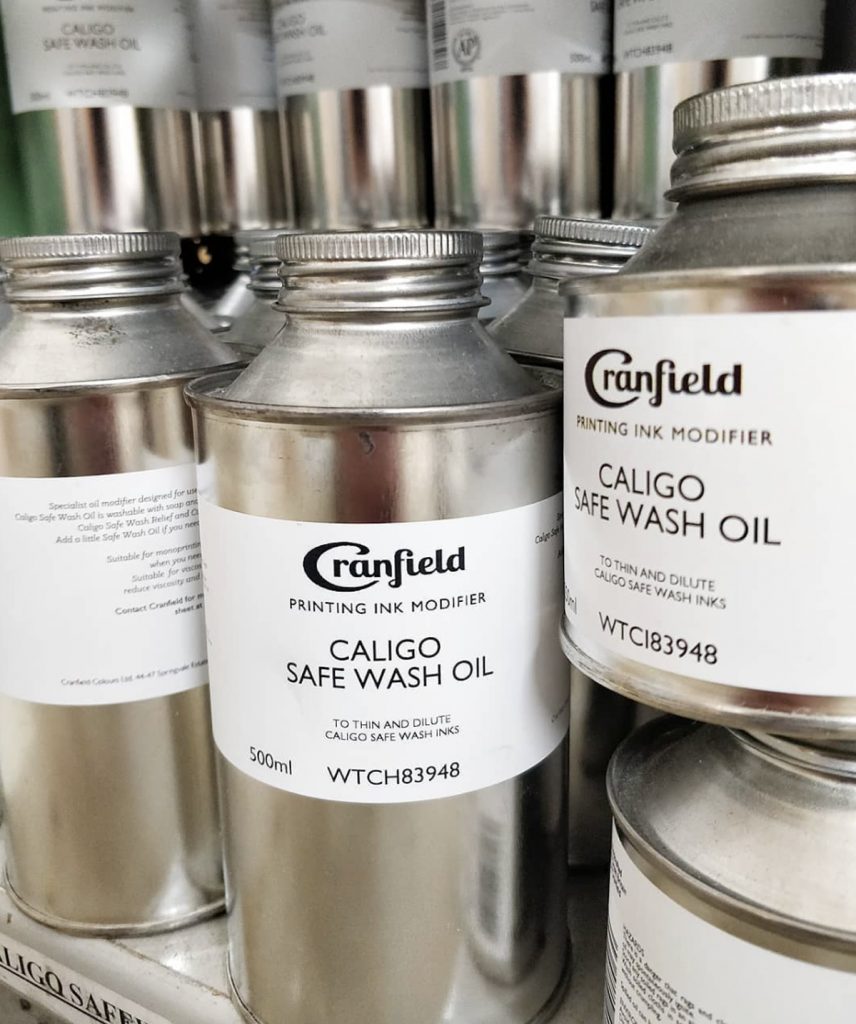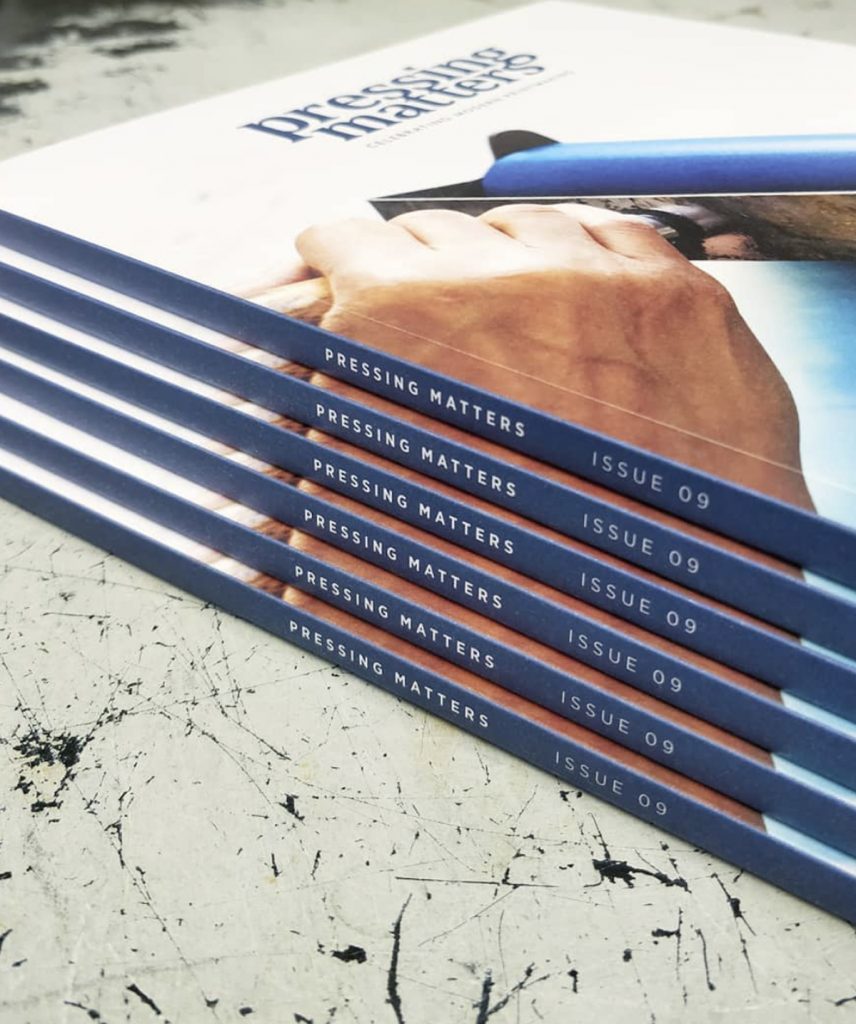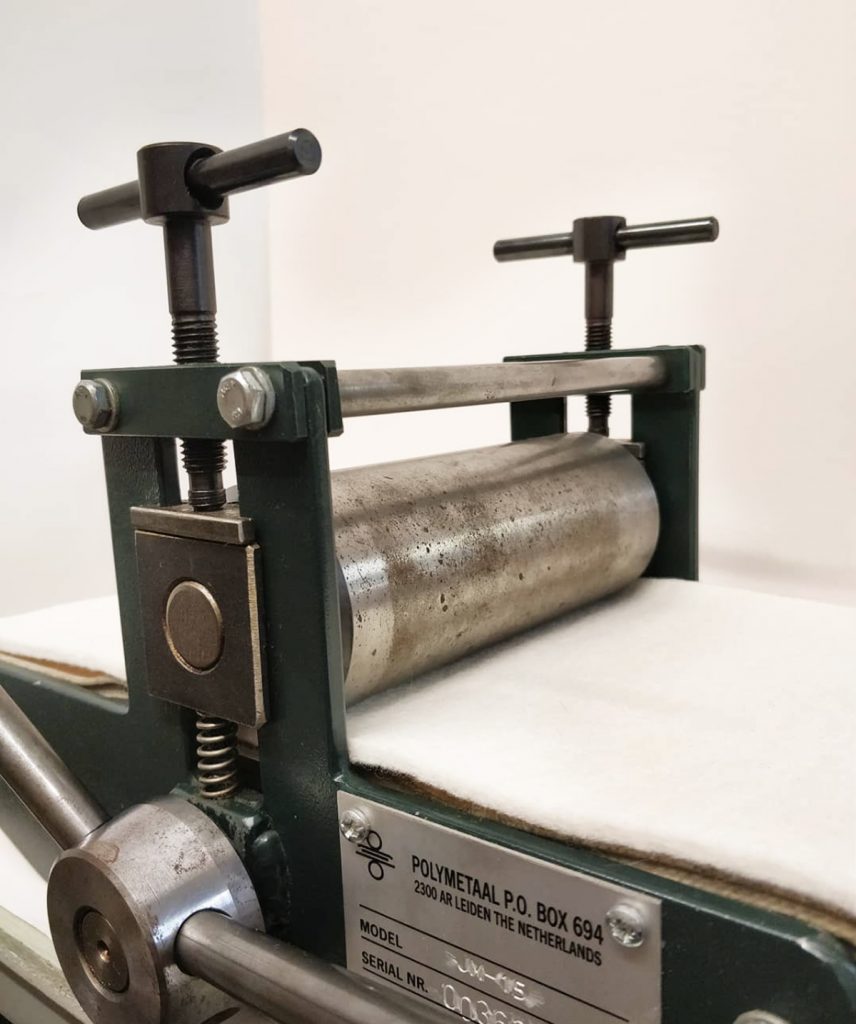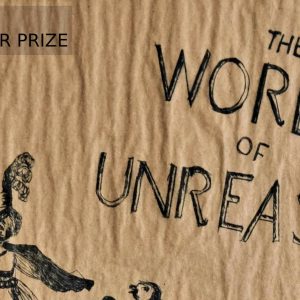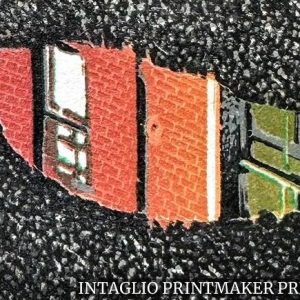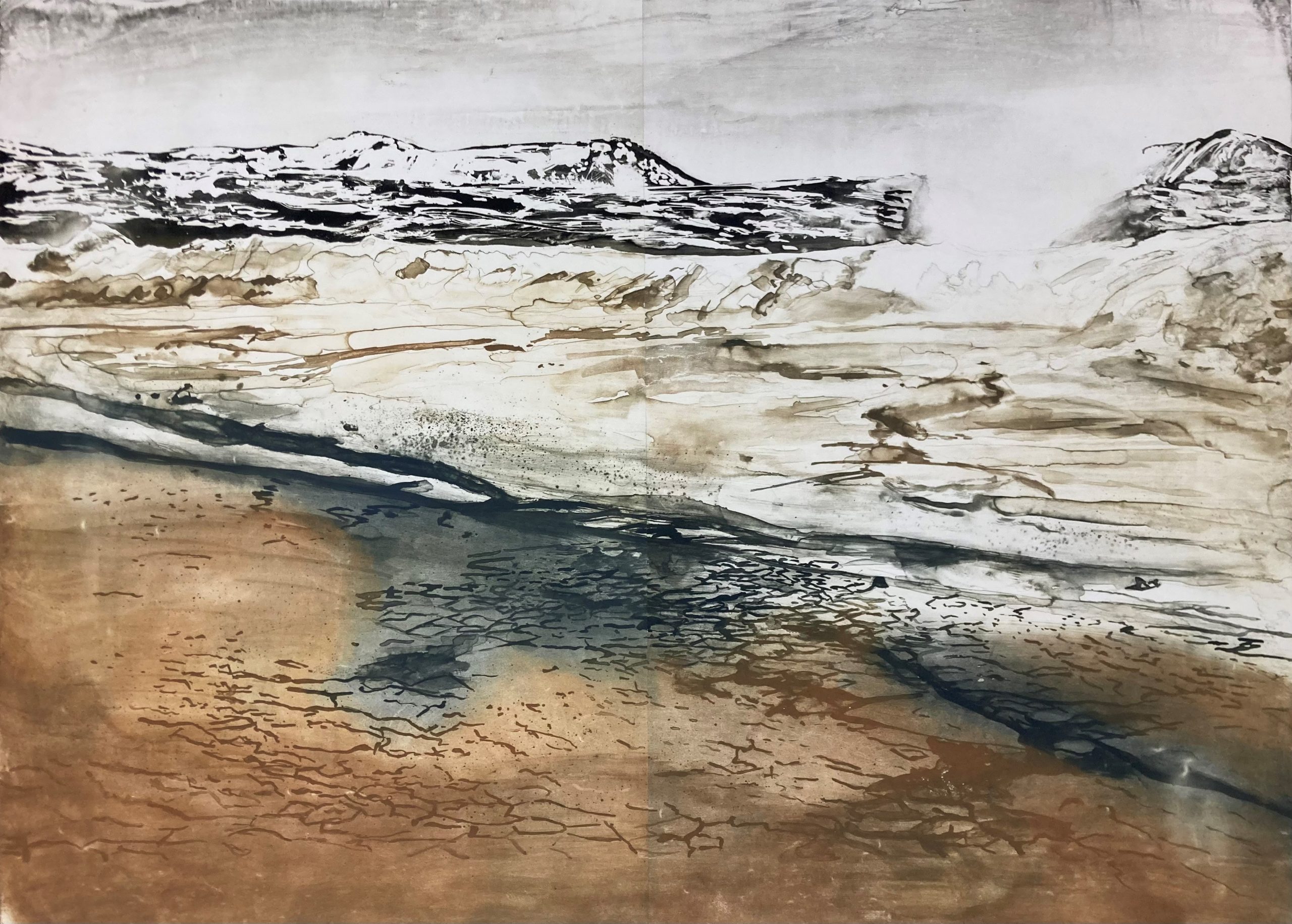
Intaglio Printmaker Prize Winner: Francesca Onesti
Royal College of Art MA 2022
This year’s Intaglio Printmaker Prize at the Royal College of Art was awarded to Francesca Onesti, with her series of hand painted photopolymer etchings. We caught up with Francesca to learn a bit more about her winning pieces and her practise.
Tell us a bit about your winning pieces and the process?
Krafla volcanic zone is a group of 4 hand painted photopolymer etchings (each 80x60cm) developed from my solo hiking and camping expedition to Iceland in summer 2021, particularly to geothermally active sites in the north of Iceland. A culmination of lived physical and mental challenges, the works explore my relationship with the location and its specificities. My practice revolves around my embodied experiences and complex perceptions of remote natural environments and phenomena. Atmospheric resonance, remoteness, geology, affect, detailed noticing, the psychological and the sensory are central to my experiences and the work I make, and I am interested in how these elements are diffracted through and shaped by each other, and in what I bring to and absorb from a place.
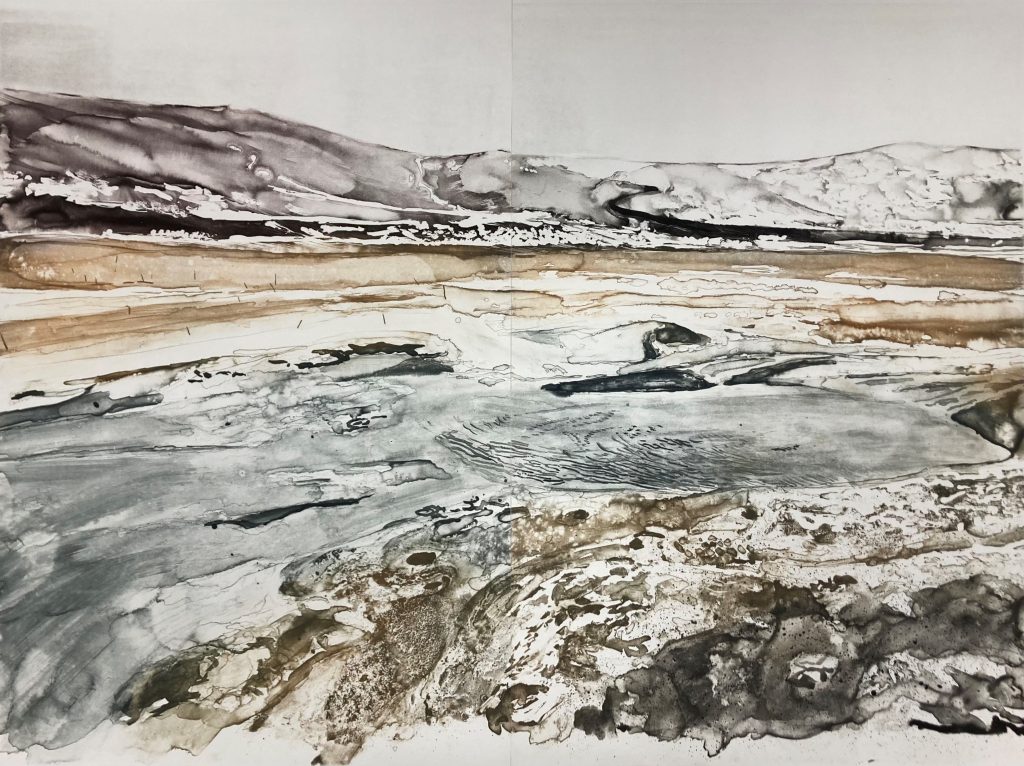
Through an ongoing engagement with pictorial mark making I investigated the volcanic specificities, such as the cracking of hydrothermally altered ground, by experimenting with different materials such as masking fluid and Indian ink to create a different range of marks, washes, tones and textural brush work. The Indian ink allowed me to retain a directness of marks and to make use of the natural effects of the ink as it was mixed with water, allowing me to explore the subtleties of steam clouds and the icy conditions. The photopolymer method allowed me to ink the plates a la poupée to explore the depth of colour integral to the atmospheric experience of these locations. The presentation of these works together also relates to my ongoing exploration of perspective and the interrelationships between the images, both haptic and optic, inviting attention to the natural materials and an affective sense of involvement with the natural phenomena, and of my own sensory connections.
Tell us about your other works, are they similar or different?
My current works are similar, revolving around my field research experiences of Iceland, and I have created a large multi-plate hand painted photopolymer also developed from the Krafla volcanic zone. I have been working with etching and aquatint which has a different material presence and visual language to the photopolymer prints. Like the photopolymer prints, my etchings are coloured la poupée and involve experimentation with different materials, and the processes used in all my works are direct and physical which allows a re-engagement with place, but the etching process has a particular intaglio language through which I have been exploring my attraction to geo-specific textures, structures and colours, and it reflects chemical changes to surface such as geothermal ground alteration.

What made you get into printmaking?
I became drawn to the unique visual language of printmaking, particularly to the intense affect and strong material presence intaglio processes give; and I am really interested in a wider interpretation of print, and its implications, as a diverse and multidisciplinary medium.
What would be your ultimate Intaglio wishlist?
My ultimate intaglio wishlist would include copper plates to create a very large multiple etching…and to have my own press one day would be very nice too!
If you could own one artwork what would it be?
That’s a really difficult question but I’ve been thinking a lot about Olafur Eliasson’s work ‘Moss Wall’, made from living reindeer moss, as it really provides a sensory, material connection to some of the locations I have experienced, with a strong atmospheric resonance and psychological effect, traversing that liminal space between location, natural materials and viewer.

Image : Tate
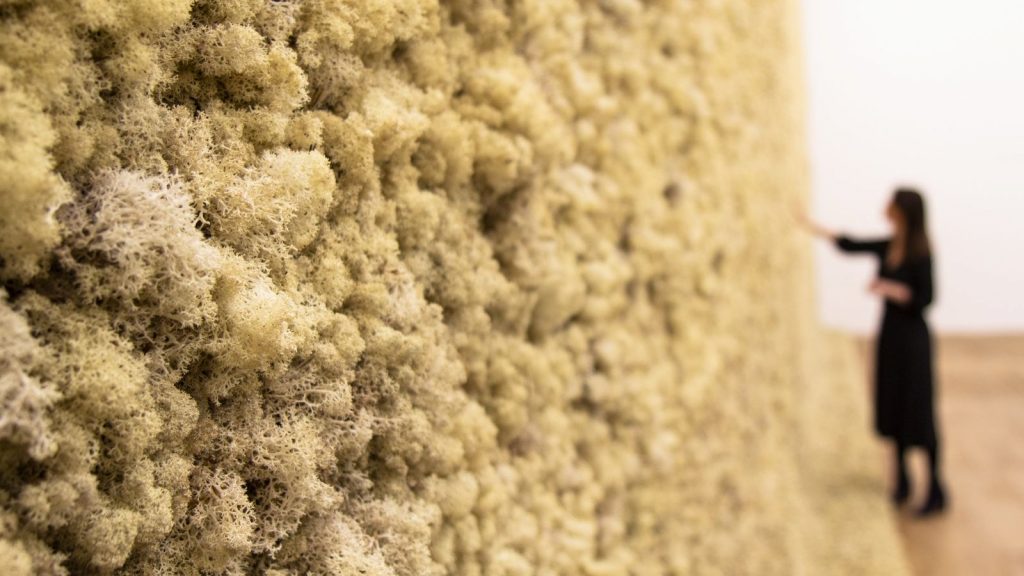
Image: National Geographic
And lastly, do you have any other exhibitions coming up soon?
My work is currently being shown at Travers Smith’s offices in London.
Congratulation to Francesca, we can’t wait to see what you get up to next! If you would like to find out more about Francesca’s work, head on over to her website at: www.francescaonesti.com


